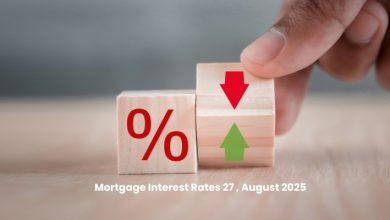
The Bank of Canada’s guarded statement on Wednesday offered little clarity on a potential timeline for interest rate cuts, according to James Laird, co-CEO of RateHub.ca and president of mortgage lender CanWise.
The central bank opted to maintain its benchmark interest rate at 5.0% in its latest decision. The accompanying statement made no mention of future rate cuts, although Governor Tiff Macklem acknowledged a June cut as a possibility during the subsequent press conference.
Laird, speaking to Canadian Mortgage Professional, suggested the Bank of Canada might be waiting for the right moment, possibly due to concerns that a premature cut could jeopardize their fight against inflation.
“My interpretation of the [statement] is that they’ll need to feel a high degree of certainty that a cut won’t undo all the progress they’ve made over the past two years of elevated rates,” he said. “I think they’d rather err on the side of caution than be too quick.”
“They need to be confident that cutting rates won’t hurt their inflation fight before they consider it a good idea.”
How Might the US Outlook Shape the Bank of Canada’s Approach?
The Bank’s latest decision came shortly after new data revealed that inflation south of the border rose more than expected in March. The core Consumer Price Index (CPI), excluding food and energy costs, jumped by 0.4% over the previous month and 3.8% year-over-year.
This has fueled speculation that the US Federal Reserve will delay its own timeline for rate cuts. It also raises the possibility that Canada, with a weaker economy compared to the US, could see central bank rate cuts even if the Fed holds steady.
Such a scenario could pose a challenge for the Bank of Canada, according to Laird.
“I think one of the biggest challenges for them is that the Canadian and US economies are headed in different directions,” he said. “The Canadian economy likely needs a rate cut before the US does, but if they do that, it has all sorts of other implications.”
“It seems like we usually need to follow their lead – but that means either cutting rates before them or leaving rates too high for too long, further damaging the Canadian economy.”
Many prospective first-time homebuyers are eagerly awaiting the first sign from the Bank that a rate cut is on the horizon, but Laird downplays the impact of Wednesday’s hold, the sixth consecutive one, on the housing market.
“I don’t think this statement changed much in terms of housing valuations, demand, or overall market dynamics,” he said. “If you were thinking of buying a house this spring, you’re probably still thinking of buying a house this spring – and if you weren’t planning on buying a house in spring, you’re still not.”
“An announcement of an upcoming rate cut, or the actual first rate cut, would likely have a bigger impact. But this statement didn’t seem to offer anything that would significantly shift the housing market.”
How Likely is a Bank of Canada Rate Cut in June?
All eyes now turn to the Bank’s next decision, scheduled for June 5th. Market predictions regarding a 25-basis-point cut in that announcement appear divided.
Despite Macklem’s admission of a possible June cut, market expectations for a reduction that month fell from 84% to 56% following Wednesday’s announcement, according to Reuters.
Laird highlights the importance of the upcoming release of the minutes from the Bank’s April meeting in providing clues about a potential June cut.
“I’m curious to see to what extent, or at all, they actually discussed cutting rates this time around,” he said. “Was it even on the table, or not? If there’s going to be a cut next time, I think it would have at least needed to be discussed as a possibility. If it wasn’t even considered this time, then I would be less optimistic about a rate cut in June.”
“But if they talked about it and decided ‘not quite yet,’ that would make me more optimistic that they’re quite close to a rate cut.”
Disclaimer: The information provided in this article is for informational purposes only and should not be considered financial advice. Always consult with a professional before making any decisions regarding interest rates or other financial matters.pen_spark





